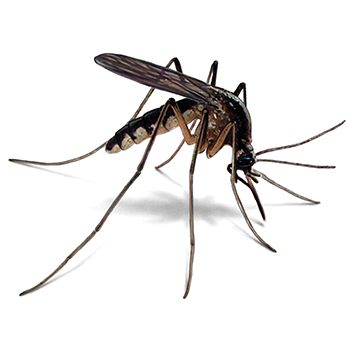Mosquitoes are small, flying insects belonging to the family Culicidae. They have a slender body, long legs, and two pairs of wings, with females typically being more notable for their biting behavior. Adult mosquitoes are known for their elongated mouthparts called proboscis, which they use to pierce skin and suck blood, primarily for egg development. They are often found in warm, humid environments and breed in stagnant water. Mosquitoes are significant as vectors for various diseases, including malaria, dengue fever, and Zika virus, making them important to public health.

Physical Characteristics of Mosquitoes
Exoskeleton
Mosquitoes feature a lightweight yet hard exoskeleton composed of chitin. This outer layer serves multiple purposes: it provides essential protection against environmental elements, such as harsh weather and predators, while also helping to maintain body moisture. This moisture retention is crucial for their survival, particularly in warm climates.
Antennae
Mosquitoes possess long, feathery antennae in males and more slender, simple antennae in females. These sensory organs are highly developed and play a vital role in detecting carbon dioxide, body heat, and even scent from potential hosts. This ability to sense their surroundings helps mosquitoes locate food sources efficiently.
Mouthparts
The mouthparts of mosquitoes are specialized and consist of a long proboscis, which is adapted for piercing skin and sucking blood. The proboscis includes sharp, needle-like structures that allow them to penetrate the skin of their hosts and access blood vessels. Female mosquitoes require blood meals to develop their eggs, while males primarily feed on nectar.
Wings
Mosquitoes have two pairs of wings that are thin, membranous, and covered in scales. This unique wing structure allows them to fly with agility and precision. The wings create a characteristic buzzing sound during flight, which is often associated with their presence. Their flying ability enables them to travel significant distances in search of hosts for feeding.
Body Segmentation
Mosquitoes exhibit a segmented body divided into three main parts: the head, thorax, and abdomen. This segmentation allows for flexibility and efficient movement, which is essential for their feeding and mating behaviors. The head houses sensory organs, while the thorax is responsible for locomotion and wing movement.
Life Cycle of Mosquitoes
Egg
The life cycle of a mosquito begins when a female lays eggs, typically in stagnant water or moist environments. Depending on the species, a female can lay hundreds of eggs at once, often in clusters called rafts. These eggs are designed to float on the water’s surface, providing optimal conditions for hatching.
Larva
After a few days, the eggs hatch into larvae, commonly referred to as wrigglers. These larvae are aquatic and live in water, where they feed on organic matter, algae, and microorganisms. They must come to the water’s surface to breathe through a specialized siphon, making them vulnerable to predators.
Pupa
Once the larvae mature, they enter the pupal stage. The pupae, also known as tumblers, are inactive and float near the water’s surface. During this stage, metamorphosis occurs as they transform into adult mosquitoes. This pupal stage can last from a few days to a week, depending on environmental conditions such as temperature and food availability.
Adult
The adult mosquito emerges from the pupal case, ready to fly and seek out food. Adult mosquitoes can live for several weeks to months, depending on the species and environmental conditions. Females require a blood meal to develop eggs, while males primarily feed on nectar and plant juices. Adult mosquitoes play a crucial role in the ecosystem, serving as pollinators and food sources for various predators.

– Family: Culicidae
– Size: Small, flying insects.
– Habitat: Thrive in warm, humid environments.
–Breeding Sites: Prefer standing water, such as ponds, swamps, marshes, and containers (e.g., bird baths, clogged gutters).
–Global Distribution: Found worldwide, except in extreme cold regions.
–Species Adaptation: Different species are adapted to various environments, from tropical rainforests to temperate regions.
-Human Impact: Urbanization and stagnant water sources can significantly increase mosquito populations.
–Health Concern: Vectors for diseases like malaria, dengue fever, and Zika virus.

Prevention Tips
Eliminate Standing Water
Since mosquitoes breed in stagnant water, it’s essential to remove any sources around your home. Regularly check and empty containers, bird baths, clogged gutters, and flower pots to prevent water accumulation. Even small amounts of water can serve as breeding sites.
Use Screens and Barriers
Installing fine mesh screens on windows and doors can effectively keep mosquitoes from entering your home. Ensure that there are no gaps, tears, or openings in the screens to maintain a strong barrier against these pests. Consider using mosquito nets over beds if you live in areas with high mosquito populations.
Employ Repellents and Protective Clothing
When spending time outdoors, use insect repellents containing DEET, picaridin, or oil of lemon eucalyptus to help deter mosquito bites. Additionally, wearing long sleeves, long pants, and light-colored clothing can reduce the risk of bites, as mosquitoes are attracted to dark colors and exposed skin.
